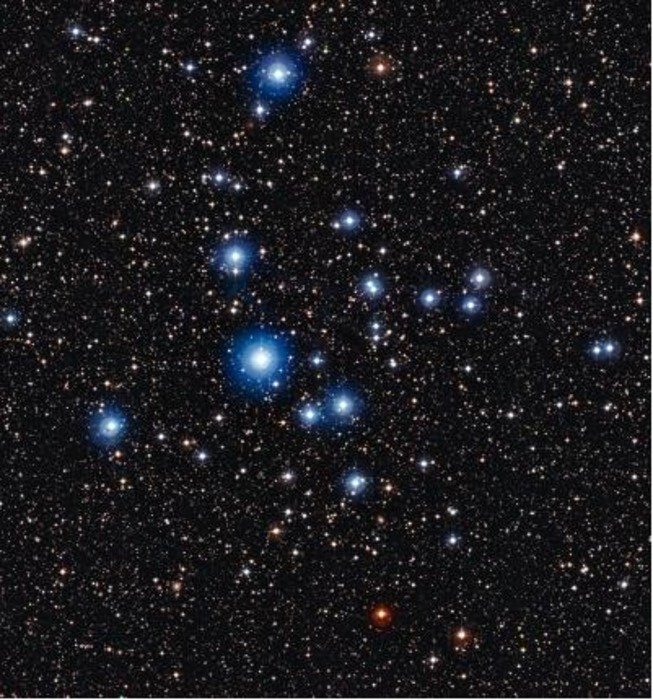This image from the MPG/ESO telescope at ESO's La Silla Observatory in Chile shows the bright open star cluster NGC 2547. Between the bright stars, far away in the background of the image, many remote galaxies can be seen, some with clearly spiral shapes. Credit: ESO
GARCHING, Germany, March 27 (UPI) -- The Milky Way galaxy is old -- some of its stars are 13 billion years old -- but it's active with new stars being constantly formed, European astronomers say.
A telescope of the European Southern Observatory in Chile has captured an image of some of those galactic newcomers forming in a star cluster known as NGC 2547, an ESO release reported Wednesday.
ESO astronomers estimate NGC 2547's stars range from 20 to 35 million years old. While that doesn't sound all that young, it is when compared to our sun -- 4,600 million years old and not yet even in its middle age.
If the sun were considered a 40-year-old person, the bright stars in NGC 2547 are 3-month-old babies, the astronomers said.
Most stars do not form in isolation but in rich clusters, and NGC 2547 contains many hot stars that glow bright blue, a telltale sign of their youth.
Star clusters like NCG 2547 usually only have comparatively short lives, on the order of several hundred million years, before they disintegrate as their component stars drift apart, the scientists said.
NGC 2547 lies in the southern constellation of Vela about 1,500 light-years from Earth and is bright enough to be easily seen using binoculars.
French astronomer Nicolas-Louis de Lacaille first observed it in 1751 during an astronomical expedition to the Cape of Good Hope in South Africa.















